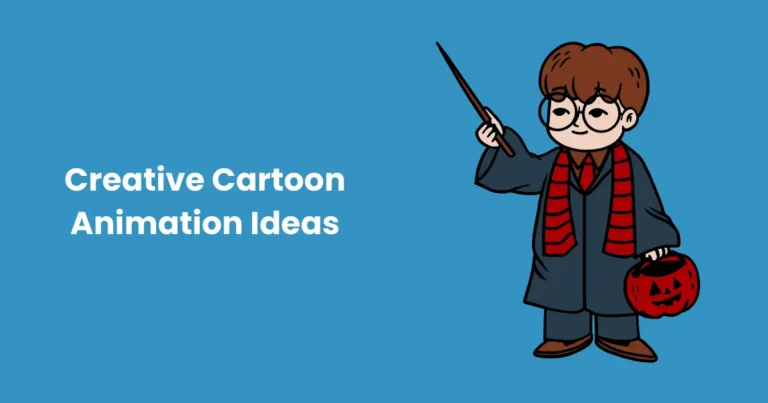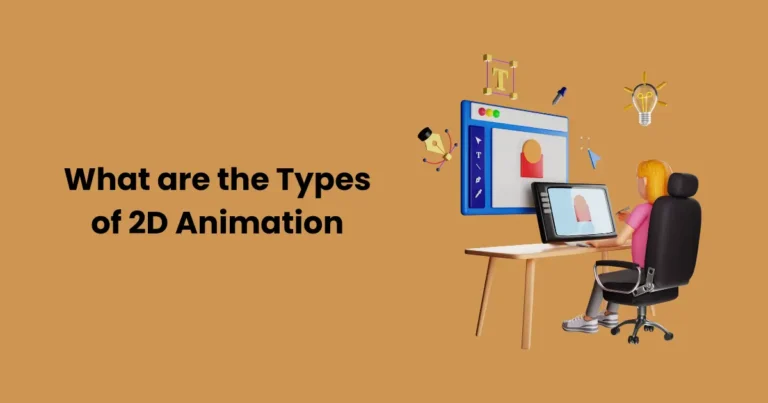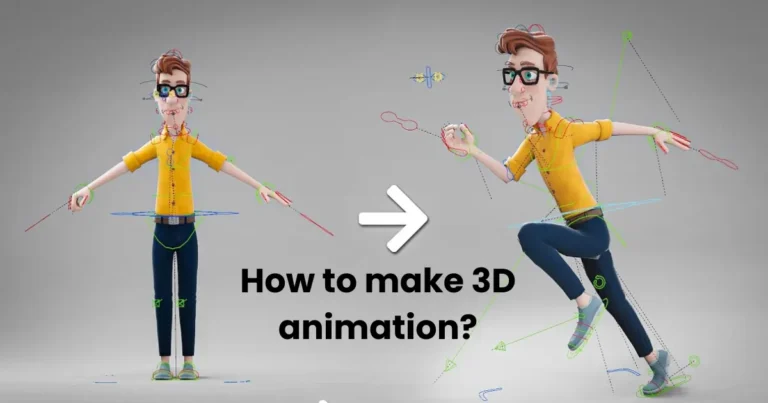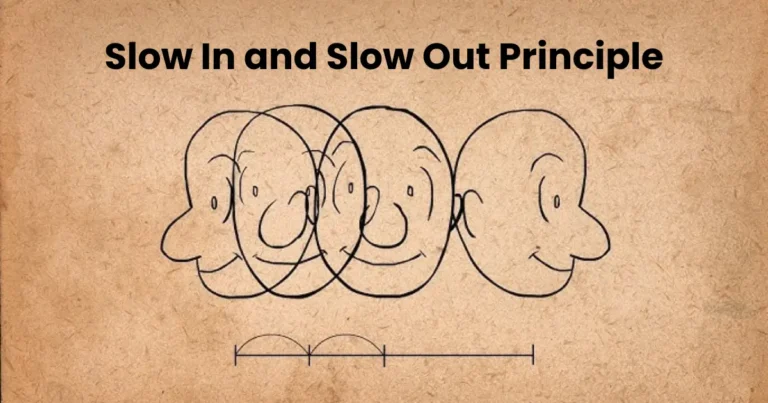What is Impregnated Animation | Ultimate guide in 2025
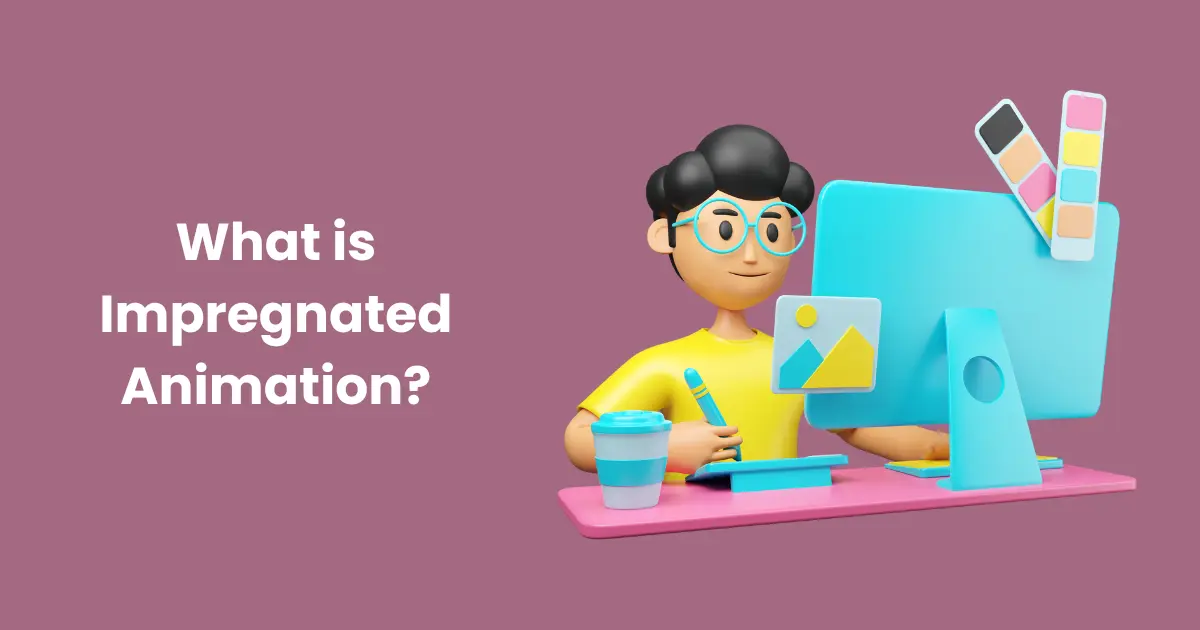
Contents
- 1 How Impregnated Animation Works
- 2 The History and Evolution of Impregnated Animation
- 3 Key Techniques in Impregnated Animation
- 4 Applications of Impregnated Animation
- 4.1 1. Film and Television
- 4.2 2. Video Games
- 4.3 3. Advertising and Marketing
- 4.4 4. Virtual Reality (VR) and Augmented Reality (AR)
- 4.5 5. Architecture and Urban Planning
- 4.6 6. Education and Training
- 4.7 7. Live Performances and Theater
- 4.8 8. Scientific Visualization
- 4.9 9. Interactive Exhibitions and Museums
- 4.10 10. Social Media and Content Creation
- 4.11 Conclusion
Impregnated animation is an innovative and evolving technique in the world of animation that merges traditional animation with cutting-edge technology. This unique approach enables animated elements to seamlessly blend with real-world or digital environments, creating a visually captivating and immersive experience for audiences. By integrating animated features into live-action footage or complex digital scenes, impregnated animation offers a fresh perspective on storytelling, adding depth and dimension to both the narrative and the visuals.
In the rapidly advancing field of animation, impregnated animation is gaining significant traction due to its versatility and ability to enhance the realism of animated content. Whether used in films, video games, or digital art, this technique allows for greater interaction between animated and physical elements, pushing the boundaries of what is possible in visual storytelling. In this article, we will explore the definition, history, techniques, and applications of impregnated animation, as well as its growing impact on various industries.
How Impregnated Animation Works
Impregnated animation operates through a combination of animation techniques, digital effects, and advanced technologies to seamlessly blend animated elements with real-world or digital environments. This process requires a deep understanding of both traditional animation principles and modern digital tools to achieve a harmonious integration of animated characters, objects, and effects within a live-action or 3D scene.

Here is a step-by-step breakdown of how impregnated animation works:
Creating the Animated Elements
The first step in creating impregnated animation involves designing and animating the elements that will be integrated into the scene. This could include characters, objects, or special effects such as explosions, magical effects, or weather elements. Traditional 2D animation, 3D modeling, or stop-motion techniques may be used, depending on the desired style and effect.
Scene Preparation
Whether working with live-action footage or a 3D environment, the next step is to prepare the scene where the animated elements will be placed. For live-action footage, this involves carefully lighting the scene, considering the camera angles, and ensuring that any physical interactions between animated and real elements are realistic. For digital environments, the background must be created with precise details to allow for smooth integration with the animated elements.
Tracking and Match Moving
For live-action scenarios, the animated elements must be matched to the camera movement and the environment’s perspective. This is achieved through a process called camera tracking or match moving, where the movement of the live-action camera is digitally replicated. This allows the animated objects or characters to move in sync with the footage, ensuring they appear grounded and realistic within the scene.
Compositing and Integratio
The next crucial step is compositing, where the animated elements are integrated into the live-action footage or 3D environment. Using specialized software, the animated objects are placed in the scene, with adjustments made to ensure proper lighting, shadows, reflections, and color grading to match the environment. This step ensures that the animated elements blend seamlessly with the real-world elements.
Interaction and Physics Simulatio
One of the key features of impregnated animation is the interaction between the animated elements and their environment. In many cases, animated objects or characters interact with physical elements, such as water, objects, or the characters in the scene. To achieve this, physics simulations are used, where the movement and behavior of the animated elements are governed by real-world rules, such as gravity, friction, and collision detection. This adds a layer of realism, making the animation feel more integrated into the environment.
Final Rendering and Touch-up
After the animation and live-action elements are combined, the final scene undergoes rendering, where all visual components are processed and output into the final video format. This step also includes any last-minute adjustments, such as color grading, refining shadows, or enhancing textures to ensure the animated and live-action elements coexist perfectly.
Through these steps, impregnated animation achieves a seamless fusion of animation and reality, offering viewers an immersive experience that blurs the line between the two worlds. By carefully controlling the integration and interaction of animated elements with their surroundings, this technique creates a more dynamic and engaging visual narrative.
The History and Evolution of Impregnated Animation
The development of impregnated animation is a fascinating journey that traces back to the earliest days of animation technology, merging artistic innovation with evolving digital tools. While the term “impregnated animation” may be relatively new, the concept of blending animated elements with live-action or 3D environments has been around for decades. Let’s take a closer look at its history and how it has evolved over the years.

Early Beginnings: Traditional Animation Meets Live-Action (1900s – 1930s)
The roots of impregnated animation can be traced to the early days of cinema, when animators first experimented with integrating animation and live-action footage. A significant milestone was in 1908 when Émile Cohl created the groundbreaking animated short “Fantasmagorie”, one of the first films to showcase animation. Although it didn’t involve live-action, it set the stage for what would later become more complex techniques.
However, it wasn’t until the 1920s that animators began exploring the idea of integrating animated characters with live-action film. The 1937 film “Snow White and the Seven Dwarfs” by Disney is often credited as the first true example of animated characters interacting with their environment in a way that laid the foundation for impregnated animation. The breakthrough moment came when Walt Disney integrated animation into live-action sequences in “Mary Poppins” (1964), featuring characters like penguins dancing alongside Julie Andrews. This blend of live-action and animation was a game-changer, though it was far from the seamless integration we see today.
The Rise of Visual Effects and CGI (1970s – 1990s)
The next significant advancement in impregnated animation came with the rise of computer-generated imagery (CGI) in the 1970s and 1980s. Early CGI experiments, such as the 1973 short “A Computer Animated Hand” by Ed Catmull, showcased how computer animation could blend with real-world footage. However, the breakthrough came in 1991 with Steven Spielberg’s “Jurassic Park”, where CGI was used to bring dinosaurs to life in a live-action environment. Though not strictly impregnated animation in the modern sense, the groundbreaking work on “Jurassic Park” set the stage for more realistic, integrated animation in live-action films.
In the 1990s, the use of digital compositing tools like Adobe After Effects and Autodesk Flame became mainstream, allowing animators to better blend animated characters and objects with live-action scenes. “Who Framed Roger Rabbit” (1988) was one of the early successes of this era, integrating animated characters into a live-action world so fluidly that it seemed as though the animated characters were truly interacting with the real world.
The Emergence of Impregnated Animation in Modern Films (2000s – Present)
The real leap forward in impregnated animation came in the 2000s, with advancements in both animation technology and visual effects. The use of motion capture, camera tracking, and advanced compositing allowed for a new level of realism, where animated characters could seamlessly blend into both live-action and digital environments. Notable examples of this include:
- “The Lord of the Rings” Trilogy (2001 – 2003): With groundbreaking use of motion capture technology, Gollum, an animated character, was fully integrated into the live-action world, interacting with human characters in a lifelike manner.
- “Avatar” (2009): James Cameron’s Avatar took animated elements to a new level by immersing animated characters in a fully 3D virtual world, creating the first truly immersive experience of impregnated animation, with characters and the environment blending seamlessly together.
- “The Jungle Book” (2016): This film blended CGI with live-action in such a way that many viewers were unaware that almost every animal and background was animated, showing just how far impregnated animation had come in terms of visual fidelity.
The Digital Revolution and the Future of Impregnated Animation (2020s and Beyond)
As technology continues to advance, the boundaries of impregnated animation are being pushed even further. Modern visual effects tools, such as Unreal Engine, Unity, and real-time rendering technologies, have revolutionized the way animated elements are integrated into both live-action and 3D environments. This has allowed for more interactive experiences in gaming, film, and virtual reality, where characters, objects, and environments exist and evolve in real-time.
The integration of AI-driven animation and procedural generation techniques promises to further expand the possibilities for impregnated animation, enabling even more natural interactions between animated and physical elements. The rise of virtual production, as seen in series like The Mandalorian (2019), which utilizes digital stages and real-time CGI rendering, demonstrates how impregnated animation will continue to shape the future of visual storytelling.
The evolution of impregnated animation has come a long way from its early days, and as technology continues to advance, the possibilities for blending animated elements with real-world environments are virtually limitless. From the first animated characters interacting with live-action actors to the stunning realism achieved through modern CGI and motion capture, impregnated animation has forever changed the way we experience animation. With emerging technologies like AI and real-time rendering, we can only expect this fascinating technique to continue evolving and influencing the future of entertainment.
Key Techniques in Impregnated Animation
Impregnated animation is a complex and multifaceted process that combines various animation techniques with advanced technologies to seamlessly integrate animated elements into real-world or digital environments. To achieve the desired effect of blending animation with live-action or 3D scenes, animators and visual effects (VFX) artists employ several key techniques. Here are the primary methods used in impregnated animation:

1. Motion Capture (MoCap)
Motion capture, or MoCap, is one of the most crucial techniques in impregnated animation. This technology involves recording the movements of a live actor or object and translating them into animated characters or elements. In impregnated animation, MoCap is often used to create realistic animations of characters that need to interact with their environment in a live-action or digital setting.
- How it works: Sensors or markers are placed on an actor’s body, which are then tracked by cameras to capture their movements. The data collected is used to animate a 3D character or object.
- Applications: MoCap is frequently used in films like The Lord of the Rings for characters like Gollum, or in Avatar to animate the Na’vi characters, allowing them to move and express emotions as naturally as human actors.
2. Camera Tracking and Match Moving
Camera tracking, also known as match moving, is essential for making animated elements appear as if they are part of the live-action scene. This technique ensures that the animation stays consistent with the movement of the camera and the environment.
- How it works: The motion of the live-action camera is analyzed and tracked using software to replicate its movement digitally. The camera’s perspective and angle are matched in the digital world, allowing the animated elements to interact seamlessly with their environment.
- Applications: Camera tracking is used extensively in films like Jurassic Park, where CGI dinosaurs interact with real-world actors and environments, creating the illusion that the creatures are physically present in the scene.
3. Compositing
Compositing is the process of combining multiple visual elements from different sources into a single image or sequence. In impregnated animation, compositing ensures that the animated elements blend seamlessly with the live-action footage or 3D environment.
- How it works: Using software like Adobe After Effects, Nuke, or Autodesk Flame, animators can layer animated elements over the live-action background while adjusting factors like lighting, color grading, shadows, and reflections. The goal is to make the animated objects appear naturally integrated with the real-world scene.
- Applications: Who Framed Roger Rabbit (1988) used compositing to merge animated characters with live-action actors, allowing them to interact as though they were in the same world.
4. 3D Modeling and Rendering
For more complex scenes, 3D modeling and rendering techniques are used to create animated elements that need to be integrated into live-action or other 3D environments. This technique is particularly valuable for creating intricate characters, objects, and environments.
- How it works: 3D models are created using software like Blender, Maya, or ZBrush, and then rendered to create high-quality visuals that can be layered into the scene. The rendered 3D models are designed with realistic textures, lighting, and shadows to match the live-action footage.
- Applications: Films like Avatar (2009) used advanced 3D modeling and rendering techniques to create the lush, vibrant world of Pandora, seamlessly integrating animated characters with their environment.
5. Physics Simulation
To make animated elements interact believably with the real world, physics simulations are used to model the behavior of objects and characters under natural forces such as gravity, wind, and collisions. This adds realism and cohesion between animated and live-action elements.
- How it works: Using physics engines like Houdini, Maya, or Blender, animators can simulate real-world behaviors such as the movement of water, the flow of wind, or the force of impacts. These simulations ensure that animated characters or objects move naturally and realistically in their environments.
- Applications: In The Jungle Book (2016), the animated animals were designed to interact with their physical surroundings, including reacting to the terrain, weather, and other creatures.
6. Augmented Reality (AR) Integration
Augmented Reality (AR) is increasingly being used in impregnated animation, especially in interactive media like video games and virtual reality (VR). AR allows for real-time blending of animated elements with the real world, giving users the ability to interact with animated features in their physical environment.
- How it works: AR tools use cameras and sensors to map real-world environments, and then overlay animated elements on top of this real-world view in real-time. This interaction happens dynamically, allowing animated objects to respond to user input or environmental changes.
- Applications: AR technology is used in mobile games like Pokémon Go, where animated creatures interact with the real world as viewed through a smartphone camera.
7. Real-Time Rendering
Real-time rendering is a crucial technique in modern impregnated animation, particularly for applications like video games, VR, and interactive media. It allows for the instantaneous generation of animated content, enabling interactive experiences where animated elements respond dynamically to user actions or environmental changes.
- How it works: Software engines like Unreal Engine or Unity process and render animation content instantly, allowing for live interaction between animated and physical elements.
- Applications: In the production of virtual environments for films or video games, real-time rendering allows for immersive experiences where animated characters and objects exist in a world that adapts to user input in real-time, as seen in The Mandalorian series, which utilized real-time digital sets.
8. Digital Matte Painting (DMP)
Digital matte painting involves creating detailed, large-scale backgrounds or environments using digital painting techniques, which are then integrated into scenes with animated elements. This method is often used to create expansive landscapes or fantastical settings.
- How it works: Using digital tools like Photoshop, 3D software, and other VFX tools, artists create highly detailed backgrounds that can be combined with animated elements to create a seamless environment.
- Applications: Digital matte paintings were famously used in films like Star Wars to create expansive planetary landscapes, often seamlessly blending real actors with the digitally-created settings.
Impregnated animation relies on a combination of sophisticated techniques to create immersive experiences where animated elements appear to interact seamlessly with their real-world surroundings. Whether through motion capture, camera tracking, compositing, or real-time rendering, these key methods help bring animated characters and objects to life, creating a richer and more engaging visual experience. As technology continues to evolve, the techniques used in impregnated animation will continue to advance, pushing the boundaries of visual storytelling even further.
Applications of Impregnated Animation
Impregnated animation, the technique of seamlessly integrating animated elements with live-action or digital environments, has a broad range of applications across various industries. From cinema to gaming and advertising, this powerful animation method has revolutionized the way animated characters and objects interact with the real world. Below are some key areas where impregnated animation is making a significant impact.

1. Film and Television
One of the most prominent uses of impregnated animation is in the film and television industry, where it allows for the creation of visually captivating scenes that blend live-action with animation. This technique has been used to create characters, creatures, and effects that interact with real-world environments, making the animation feel organic and immersive.
- Examples:
- “Avatar” (2009): James Cameron’s groundbreaking use of CGI and motion capture brought the world of Pandora to life, integrating animated Na’vi characters with live-action actors.
- “The Jungle Book” (2016): The film seamlessly blended live-action sequences with highly realistic animated animals, with every interaction between actor Neel Sethi and the CGI animals being meticulously crafted.
- “The Mandalorian” (2019): Through the use of real-time visual effects and impregnated animation, The Mandalorian created immersive virtual environments, integrating live-action with animated backgrounds and creatures.
2. Video Games
In the gaming industry, impregnated animation is used to create realistic and interactive characters and environments. By blending animated elements with real-time interactive gameplay, this technique allows players to experience dynamic worlds where animated characters respond to their actions within the game.
- Examples:
- “The Last of Us Part II” (2020): The game used motion capture and sophisticated animation techniques to create lifelike character interactions and environmental effects, blending animated elements with real-time game action.
- “Assassin’s Creed” series: The game integrates animated characters, objects, and dynamic environments to create a seamless and immersive gaming experience.
- “Pokémon GO”: The mobile game uses augmented reality to overlay animated Pokémon into the real-world environment viewed through a smartphone camera.
3. Advertising and Marketing
In the advertising industry, impregnated animation offers a unique and visually engaging way to create memorable ads. By combining animated characters or objects with live-action footage, brands can capture the viewer’s attention in a way that traditional animation or live-action alone cannot achieve.
- Examples:
- Coca-Cola: The company often uses animated elements, like dancing polar bears, integrated into live-action settings to evoke a sense of magic and excitement, especially during the holiday season.
- Nike: Nike frequently uses animated characters interacting with real-world environments to promote their products, blending the physical and digital worlds to capture a dynamic sense of energy and movement.
4. Virtual Reality (VR) and Augmented Reality (AR)
In VR and AR applications, impregnated animation plays a significant role in creating interactive, immersive experiences. The integration of animated elements with the user’s physical environment makes these digital experiences more lifelike, enhancing engagement and interaction.
- Examples:
- Oculus Quest Games: VR games like Beat Saber and Vader Immortal blend animated characters and environments with real-time interactions, allowing users to engage with animated elements within a virtual space.
- AR Apps: Apps like IKEA Place or Google Lens use AR to place animated objects or characters within the user’s physical environment, creating interactive and immersive experiences.
5. Architecture and Urban Planning
Impregnated animation is also being used in architecture and urban planning to visualize projects before they are built. By combining animated elements with real-world photography or 3D modeling, planners can create realistic simulations of how buildings, landscapes, or cities will look once constructed.
- Examples:
- Architectural Visualizations: Companies use animated 3D models integrated with real-world footage to showcase how buildings will interact with their surroundings, making it easier for clients to understand and evaluate designs.
- Urban Planning: Cities can use impregnated animation techniques to visualize how urban spaces will evolve over time, integrating animated people, vehicles, and elements with live-action footage to simulate real-world interactions.
6. Education and Training
Impregnated animation is gaining traction in educational settings, especially in creating engaging training simulations or explainer videos. By integrating animated characters with real-world footage, educational content becomes more engaging, helping learners grasp complex concepts through visual storytelling.
- Examples:
- Medical Training: In medical simulations, animated organs or surgical procedures can be integrated with live-action videos to show medical professionals how to perform specific tasks.
- Corporate Training: Companies use animated characters integrated into live-action scenarios to demonstrate workplace behaviors, safety protocols, or technical procedures.
- Online Learning: Animated content integrated into e-learning courses enhances engagement, helping learners interact with both animated content and real-world contexts.
7. Live Performances and Theater
In live performances, including theater and live concerts, impregnated animation is increasingly being used to enhance the storytelling experience. Animated elements can be projected or integrated with live performances to create visually striking moments that captivate the audience.
- Examples:
- Cirque du Soleil: Known for its use of digital projections and animated elements, Cirque du Soleil creates performances where animated creatures or environments interact with the live performers, creating a dynamic, immersive atmosphere.
- Concerts: Many artists use visual effects, including animated characters, integrated into their stage shows to create larger-than-life performances that blend live action and animation seamlessly.
8. Scientific Visualization
Impregnated animation plays a crucial role in scientific visualization, helping researchers and educators better understand complex data, models, or phenomena by animating abstract concepts and integrating them with real-world imagery.
- Examples:
- Space Exploration: NASA and other space agencies use impregnated animation to visualize space missions, integrating CGI models of spacecraft or planets with real-world footage from telescopes or spacecraft.
- Medical Visualization: Scientists use animated models of human anatomy or cellular structures, combined with real-world footage or simulations, to visualize biological processes and medical conditions in a clearer, more comprehensible way.
9. Interactive Exhibitions and Museums
Museums and exhibitions are increasingly using impregnated animation to create interactive and engaging displays. By combining animated elements with physical exhibits or real-world objects, visitors can interact with exhibits in ways that were not possible before.
- Examples:
- The Smithsonian Institution: The museum uses animated visuals integrated into exhibits to create immersive experiences that bring history and science to life, making learning more engaging and interactive.
- Interactive Art Exhibitions: Art galleries and museums use impregnated animation to blend traditional artwork with animated visuals, allowing visitors to experience the art in new, innovative ways.
10. Social Media and Content Creation
On social media, influencers and content creators use impregnated animation to captivate audiences with unique and eye-catching videos. By blending animated elements into everyday content, creators can provide their followers with innovative and visually engaging media.
- Examples:
- TikTok and Instagram: Content creators use animated filters and special effects to bring their live-action videos to life, integrating elements such as animated characters, backgrounds, or visual effects into their posts.
- YouTube: Creators often incorporate animated elements into their vlogs or tutorials, enhancing the storytelling and making the content more engaging for viewers.
Impregnated animation has a broad range of applications that extend across multiple industries, from entertainment and advertising to education, urban planning, and beyond. By blending animated elements with live-action footage or 3D environments, it enhances storytelling, interactivity, and engagement, creating experiences that feel dynamic and real. As technology continues to advance, the potential for impregnated animation will only expand, opening up new opportunities for creativity and innovation across diverse sectors.
Conclusion
In conclusion, impregnated animation represents a groundbreaking fusion of real-world footage and animated elements, offering unparalleled opportunities for creative expression and immersive storytelling. However, achieving seamless integration between these elements requires overcoming a series of technical, creative, and practical challenges. From complex rendering processes to ensuring consistent interaction between animated and live-action components, animators must utilize cutting-edge technology and refined techniques to bring their visions to life. Despite these hurdles, the potential of impregnated animation to enhance various industries—from film and gaming to advertising and education—makes it an invaluable tool for creators.
As the field continues to evolve, advancements in AI, motion capture, and real-time rendering are likely to reduce many of the obstacles currently faced in impregnated animation production. With these innovations, animators will be able to achieve even more lifelike, dynamic, and engaging experiences, allowing them to push the boundaries of visual storytelling. As the technology becomes more accessible, it is expected that impregnated animation will play a central role in shaping the future of both entertainment and interactive media.

